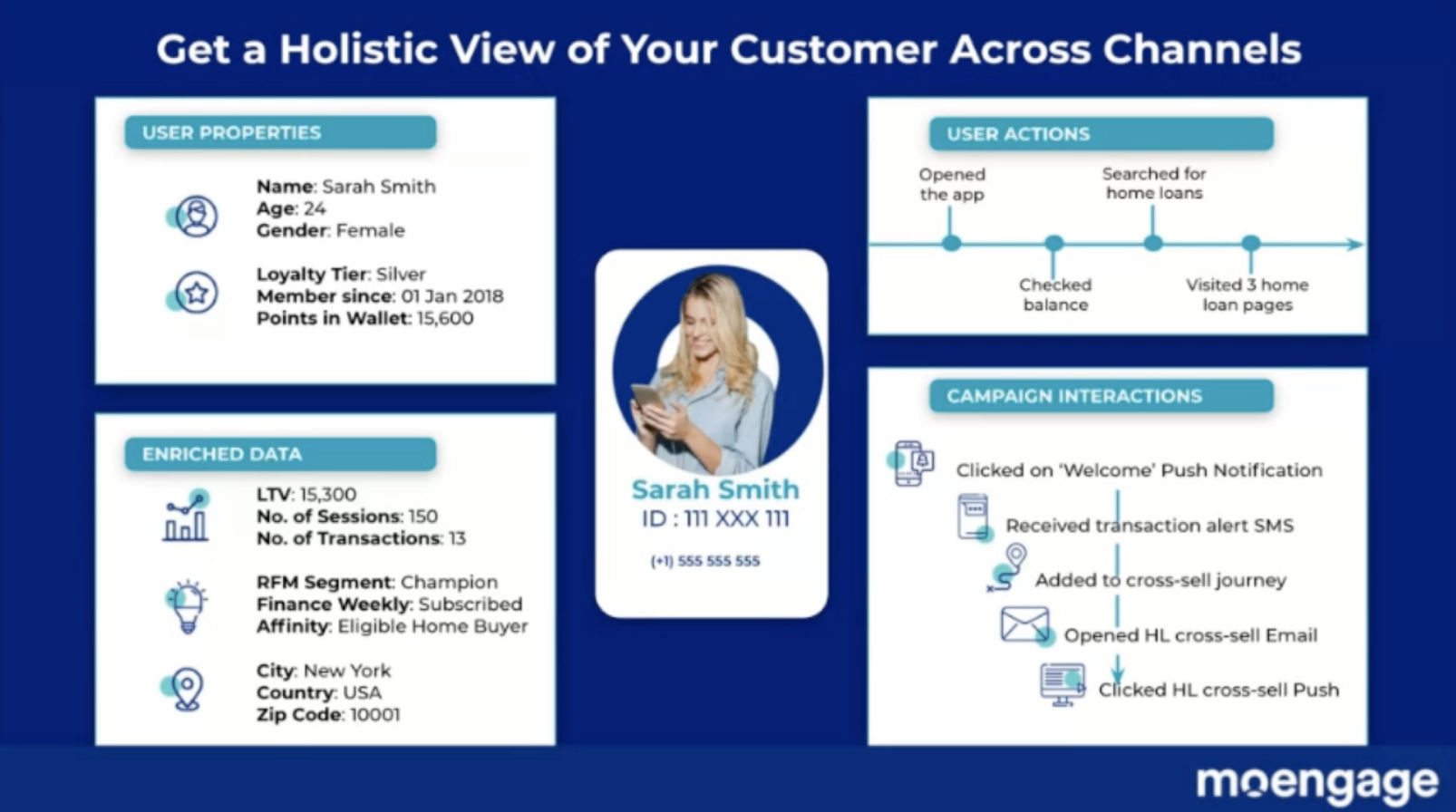The CommerceNext webinar, “Personalized Engagement—How to Stop Frustrating Your Customers,” began with a presentation from Ehren Maedge (GM – North America, MoEngage) about the personalization of messages and engagement for customers. Next, Maedge was joined for a detailed discussion on best practices for personalization by John Yesko (Senior Director, Head of User Experience & Service Design, Walgreens), Jenna Posner(VP of Digital, SNIPES) and Jeff Gerstel (CMO, B&H Photo Video).
Read the recap here or watch the replay.

[PRESENTATION] MoEngage On Current Personalization Trends
Personalization begins with understanding your customers. MoEngage conducted a research survey to acquire a “360-degree view of [the] customer,” including how they are engaging with a brand.

The survey yielded a number of interesting results, the first of which surrounds holidays and seasons: Customers are more receptive to frequent communication during the holiday season. Also, preferred personalized channels for customers vary depending on their generation. For example, Gen Z uses Snapchat more than email. Because of stats like this, some marketers argue that email is dead, but MoEngage is not ready to write it off completely.
MoEngage highlighted keys trends that drive personalized retail experiences:
- Holistic Customer View
- AI & Optimization
- Digital Transformation
- Insights-led Engagement
- Moments-based Marketing
While Covid forced people to adopt new channels for retail, these new channels are not necessarily dead when we’re in Covid recovery. Retailers became more flexible with the channels of both communication and sales. As a result, consumers want to continue to see a variation in options as we return to in-person. Additionally, customers want to see consistency in their favorite brands’ communication through these channels, which requires communication throughout a company.
Here are MoEngage’s top tips for implementing a personalized strategy:
- Unify your customer data across channels.
- Act on the data by analyzing your users’ paths and then work to alleviate blind spots.
- Understand and segment your customers using RFM (Recency, Frequency, and Monetary value).
- Personalize messages with dynamic content—remember channel and frequency matter.
- Optimize engagement across different channels at every stage of the customer lifecycle.

The customer lifecycle.
[PANEL]
As a result of the pandemic, many companies were forced to quickly implement contactless retail practices, such as curbside pickup, e-receipts and other digital shopping practices.
Under the proverbial gun to deliver products during a pandemic, SNIPES first focused on simply building the operations and mechanics to enable the transactions to take place without leveraging data. Now, with the data, they will refine the mechanics after learning what customers value in these processes.
Walgreens has the unique experience of managing vaccine appointments. With incomplete customer data and information about vaccine distribution and eligibility, they described the process of setting up the scheduling and fulfillment process as “organic,” meaning they had to be flexible and pay attention to constant changes in the vaccine distribution process.
At B&H Video, “knowing who your customers are and offering interactions that will be valuable to them,” is how they organize their personalization. The key for them is: “Don’t get too fancy.” It’s important to master the basics of personalization before getting too complicated and frustrating your customer in the process, or making a mistake.
When it comes to personalization, it is important to understand your customers on a deeper level before trying to figure out what they want to see. Additionally, the shiny object isn’t necessarily the answer.
Related Posts
-
Building Loyalty with Newly Acquired Customers
Many brands experienced an influx of new customers due to…
-
Campaigns We Love Series: Having Pride In Your Brand
Having Pride In Your Brand Every time we talk…
-
Engaging and Converting Customers With Killer Content
In our latest CommerceNext webinar, industry experts from American Eagle,…




